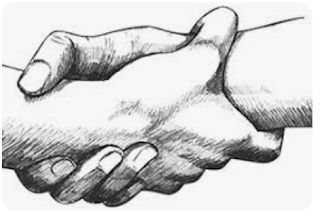In many African societies, where patriarchal systems have historically shaped social norms and power dynamics, the mental wellness of vulnerable populations—particularly women experiencing gender-based violence (GBV) and youth grappling with gender identity—remains under-prioritized and often stigmatized. In communities where individuals are grappling with the dual challenges of patriarchy and evolving gender identities, real empathy is not a luxury—it is a lifeline. It bridges the gap between pain and healing, silence and expression, exclusion and belonging. The intersection of culture, gender, and mental health demands not just awareness but a deeper, more transformative practice: real empathy. Real empathy goes beyond sympathy or surface-level concern; it involves active listening, emotional attunement, and structural advocacy to understand and respond to the lived experiences of those suffering in silence. To support the mental wellness of women facing GBV and youth navigating gender identity, we must cultivate a culture of genuine empathy—one that listens deeply, acts justly, and embraces every human being in their full complexity and worth. The Burden of Patriarchy on Mental Wellness
Patriarchy in Africa manifests
through rigid gender roles, male dominance, and the devaluation of women's and
sexual minorities' voices. Women who endure GBV are frequently silenced,
blamed, or forced to remain in abusive relationships due to economic
dependence, cultural taboos, or religious constraints. Meanwhile, young
individuals who challenge heteronormative gender expectations are marginalized,
bullied, or labelled as abnormal and immoral. These realities contribute to
chronic mental health issues such as depression, anxiety, post-traumatic stress
disorder (PTSD), and suicidal ideation. The problem is compounded by limited
access to mental health services, societal stigma around seeking help, and the
normalization of violence and discrimination. In such a context, practicing
real empathy becomes not only a moral imperative but also a form of resistance
against oppressive systems that dehumanize and isolate.
Understanding Real Empathy
Real empathy requires a shift from judgment to understanding, from assumptions to curiosity, and from detachment to meaningful connection. It involves stepping into the emotional and psychological world of another person, without imposing one’s own biases or cultural preconceptions. For women facing GBV, this means listening to their stories without blaming them or questioning their choices. It means creating safe spaces where survivors can express their pain and receive emotional validation. Empathy here should lead to action—offering support, connecting them with services, or advocating for policy changes that protect women’s rights and safety. For young people exploring or asserting their gender identity, real empathy means affirming their right to self-expression and existence. Instead of moralizing or pathologizing their experiences, empathetic adults—especially parents, teachers, and religious leaders—should seek to understand the psychological toll of societal rejection and offer compassion, not condemnation.
Empathy as a Tool for Healing and Social Transformation
queer youth feels seen and heard, they begin to reclaim their agency and dignity. Community-led peer support groups, trauma-informed counselling, and culturally sensitive storytelling initiatives are practical ways to foster empathy and mental wellness. Moreover, empathy challenges harmful norms. When men are encouraged to listen without defensiveness, when faith leaders choose compassion over condemnation, and when schools promote inclusivity, a cultural shift begins. Empathy transforms bystanders into allies and caregivers into champions of mental wellness and human rights.
The Role of Institutions and Civil Society
Governments, religious institutions, and civil society organizations must institutionalize empathy in their policies and programming. This includes integrating gender and mental health education into school curricula, training healthcare providers in culturally competent counselling, and enacting laws that protect both survivors of GBV and individuals of diverse gender identities. Faith-based groups can also play a transformative role by emphasizing love, inclusion, and healing rather than shame and punishment. NGOs and community groups must invest in safe spaces—physical and digital—where storytelling, art, and dialogue can thrive as tools for empathy-building.















